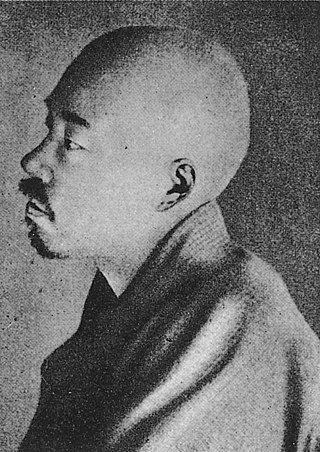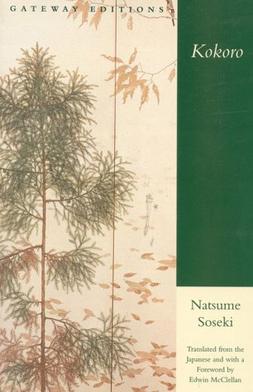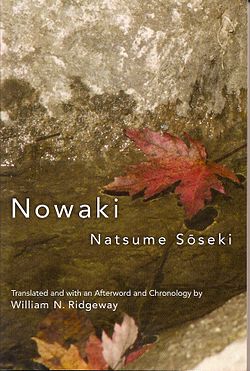This article needs additional citations for verification .(February 2013) |

Valdo H. Viglielmo (December 11, 1926 - November 14, 2016) was a prominent scholar and translator of Japanese literature and works of Japanese philosophy. [1]
This article needs additional citations for verification .(February 2013) |

Valdo H. Viglielmo (December 11, 1926 - November 14, 2016) was a prominent scholar and translator of Japanese literature and works of Japanese philosophy. [1]
Viglielmo was born in Palisades Park, New Jersey. He grew up in a small rural community in the Hudson Valley of New York State, he completed both his primary and secondary school education and began his college studies in that state. Being of draft age during World War II and knowing he would have to serve, he chose to volunteer, serving in the ASTRP (Army Specialized Training Reserve Program). He was eventually drafted in January 1945, undergoing basic training in Florida. The European phase of the war ended in May 1945 while he was in training, but the Pacific war was still raging.
Toward the end of his training Viglielmo responded to an appeal for enlisting in a Japanese language program being conducted under the auspices of the ASTP (the word "Reserve" no longer applied). He was sent to the University of Pennsylvania where he began an intensive nine-month course of study, almost exclusively in the spoken language. After the end of the war in August 1945, his training was then directed toward being an interpreter during the Occupation of Japan, and he served as such in the 720th Military Police Battalion in Tokyo from April to September 1946.
In October 1946, after his military discharge, Viglielmo transferred to Harvard University to continue his study of Japanese in the then-Far Eastern Languages Department. He received his A.B. degree magna cum laude in June 1948. He was accepted into the Harvard graduate program for Fall 1948, but chose instead to go to Japan for a three-year position teaching English as a foreign language at Meiji Gakuin University in Tokyo.
In the summer of 1951 Viglielmo returned to Harvard, receiving his M.A. degree in June 1952. He then entered the Harvard Ph.D. program in Japanese Literature, completing his general examinations in June 1953. That same year he won a Ford Foundation Fellowship for two years of graduate study in Japan, studying both at Tokyo University and the Gakushūin University. His dissertation topic was "The Later Natsume Sōseki: His Art and Thought."
At Gakushūin University, Viglielmo participated in a graduate seminar on Sōseki conducted by Sōseki biographer Komiya Toyotaka. In the spring of 1955 his Harvard teacher, Serge Elisséeff, asked Viglielmo if he would accept an appointment as a Harvard instructor in Japanese language and literature, beginning in Fall 1955. He taught at Harvard until June 1958, having completed his doctoral dissertation in December 1955 and having received his Ph.D. degree in March 1956. During the period from Fall 1958 until June 1960 he taught at International Christian University as well as Tokyo Women's Christian University and Tokyo University.
In September 1960, Viglielmo received an appointment as assistant professor at Princeton University, where he taught Japanese language and literature. In January 1965, he accepted an offer of an associate professorship in the then Department of Asian and Pacific Languages at the University of Hawaiʻi. Viglielmo was soon promoted to full professor and taught at the University of Hawai‘i until his retirement at the end of August 2002. [2]
Viglielmo's primary career focus was on modern Japanese literature, and he produced many studies of principal authors and their works, as well as translations. In 1971 Viglielmo translated the Sōseki novel Meian ( Light and Darkness , 1916), which received high praise from Western literary critics such as Fredric Jameson and Susan Sontag. Two years earlier, in 1969, he translated a brace of essays, The Existence and Discovery of Beauty, which the first Japanese Nobel Prize recipient Kawabata Yasunari gave in the form of public lectures as a visiting professor at the University of Hawai‘i in May 1969.
From the late 1950s on, Viglielmo also developed an interest in modern Japanese philosophy, introducing to the Western world works by the two principal figures of the Kyoto school, Nishida Kitarō and Tanabe Hajime. Viglielmo was abled to visit Tanabe Hajime at his home in Spring of 1959. His first translation of Nishida, Zen no kenkyū ( A Study of Good , 1911) in 1960 was considered instrumental[ citation needed ] in a deepening of East-West comparative philosophy.
Viglielmo's most sustained work in modern Japanese philosophy was a collaborative effort with David A. Dilworth and Agustin Jacinto Zavala, A Sourcebook for Modern Japanese Philosophy, in 1998. It was recognized as the first comprehensive study of its kind, with extensive selections from the work of seven major modern Japanese thinkers.
Viglielmo served as interpreter at the first International PEN meet in Tokyo in 1957. He formed friendships with the bundan (literary establishment), including Mishima Yukio, Kenzaburō Ōe, Sei Ito, Satō Haruo, and prominent critics such as Okuno Takeo and Saeki Shōichi.
Viglielmo was on the editorial staff of the Harvard Journal of Asiatic Studies . He was also the first editor of the Journal-Newsletter of the Association of Teachers of Japanese , which has since developed into the principal journal of scholars of the Japanese language and literature outside Japan. He also served as an Executive Committee member of that Association.
At the University of Hawaiʻi he enjoyed teaching Meiji-Taishō (1868-1926) literature. He attended the first International Conference of Japanologists held in Kyoto in 1972.
Viglielmo also developed a close connection with the Japanese anti-nuclear group Gensuikin (Congress for the Abolition of Atomic and Hydrogen Bombs), and especially with the Nagasaki branch. He and his wife, Frances, were instrumental in facilitating the erection in 1990 of the Nagasaki Peace Bell in Honolulu, the funding for which came from the survivors of the Nagasaki atomic bombing and their relatives and friends. In the summer of 1998 Viglielmo and his wife were invited to Nagasaki to receive a Peace Prize in honor of their work in the anti-nuclear movement. In Honolulu they were granted the Peacemaker of the Year Award in 1988 by the Church of the Crossroads.

Natsume Sōseki, pen name Sōseki, born Natsume Kin'nosuke, was a Japanese novelist. He is best known for his novels Kokoro, Botchan, I Am a Cat, Kusamakura and his unfinished work Light and Darkness. He was also a scholar of British literature and writer of haiku and kanshi poetry and fairy tales.

Masaoka Shiki, pen-name of Masaoka Noboru, was a Japanese poet, author, and literary critic in Meiji period Japan. Shiki is regarded as a major figure in the development of modern haiku poetry, credited with writing nearly 20,000 stanzas during his short life. He also wrote on reform of tanka poetry.

Kokoro is a 1914 Japanese novel by Sōseki Natsume, and the final part of a trilogy starting with To the Spring Equinox and Beyond and followed by The Wayfarer. Set in the Meiji era, the novel tells of the acquaintance between a young man and an older man called "Sensei", who holds a secret from his past regarding the death of a friend.

The Kyoto School is the name given to the Japanese philosophical movement centered at Kyoto University that assimilated Western philosophy and religious ideas and used them to reformulate religious and moral insights unique to the East Asian philosophical tradition. However, it is also used to describe postwar scholars who have taught at the same university, been influenced by the foundational thinkers of Kyoto school philosophy, and who have developed distinctive theories of Japanese uniqueness. To disambiguate the term, therefore, thinkers and writers covered by this second sense appear under The Kyoto University Research Centre for the Cultural Sciences.

Kitarō Nishida was a Japanese moral philosopher, philosopher of mathematics and science, and religious scholar. He was the founder of what has been called the Kyoto School of philosophy. He graduated from the University of Tokyo during the Meiji period in 1894 with a degree in philosophy. He was named professor of the Fourth Higher School in Ishikawa Prefecture in 1899 and later became professor of philosophy at Kyoto University. Nishida retired in 1927. In 1940, he was awarded the Order of Culture. He participated in establishing the Chiba Institute of Technology (千葉工業大学) from 1940.

Keiji Nishitani was a Japanese philosopher. He was a scholar of the Kyoto School and a disciple of Kitarō Nishida. In 1924, Nishitani received his doctorate from Kyoto Imperial University for his dissertation "Das Ideale und das Reale bei Schelling und Bergson". He studied under Martin Heidegger in Freiburg from 1937 to 1939.
Jay Rubin is an American academic and translator. He is one of the main translators of the works of the Japanese novelist Haruki Murakami into English. He has also written a guide to Japanese, Making Sense of Japanese, and a biographical literary analysis of Murakami.
Iwanami Shoten, Publishers is a Japanese publishing company based in Tokyo.

Edwin McClellan was a British Japanologist, teacher, writer, translator and interpreter of Japanese literature and culture.

Shin'ichirō Nakamura was a Japanese author.
The Wayfarer is a 1912 novel by Japanese writer Natsume Sōseki. It is the second part of a trilogy starting with To the Spring Equinox and Beyond (1912) and ending with Kokoro (1914).

Masajirō Kojima was a Japanese novelist active in Shōwa period Japan.

Morita Yonematsu, known under pen name Morita Sōhei, was a novelist and translator of Western literature active during the late Meiji, Taishō and early Shōwa periods of Japan.

Yoshimi Takeuchi was a Japanese Sinologist.
Minae Mizumura is a Japanese novelist. Among other literary awards, she has won the Noma Literary New Face Prize and the Yomiuri Prize.
Richard John Bowring is an English academic serving as Professor of Japanese Studies at the University of Cambridge and an Honorary Fellow of Downing College. In 2013, Bowring was awarded the Order of the Rising Sun 3rd Class, Gold Rays with Neck Ribbon for contributions to the development of Japanese studies, Japanese language education and the promotion of mutual understanding between Japan and the United Kingdom.
Light and Darkness or Light and Dark is a 1916 Japanese novel by Natsume Sōseki. It was his last novel and unfinished at the time of his death.

Nowaki is a short Japanese novel by Natsume Sōseki (1867–1916). Written in 1907, the novel was published in the magazine Hototogisu in January. The year 1907 was a turning point in the author's life when he left his Tokyo University teaching position to write full-time for the daily Asahi Shimbun. He also serialized the novel Gubijinsō (虞美人草) the same year.

Shigeo Iwanami was a publisher in the early Shōwa period Japan, and founder of Iwanami Shoten.
Sanshirō (三四郎) is a 1908 Japanese novel by Sōseki Natsume. It is the first in a trilogy, followed by Sorekara (1909) and The Gate (1910).